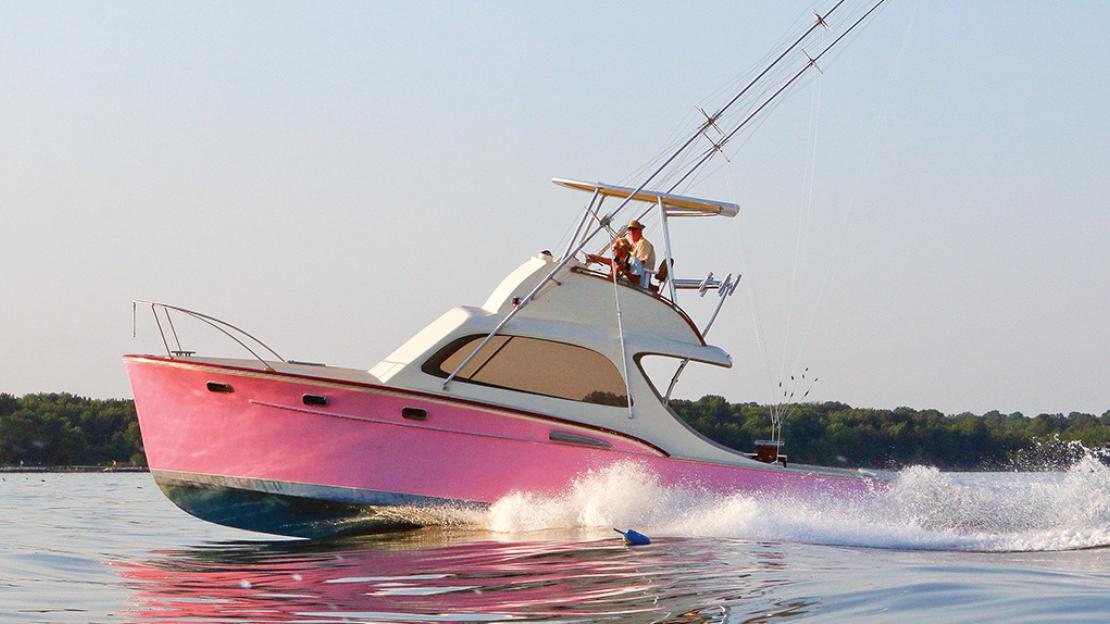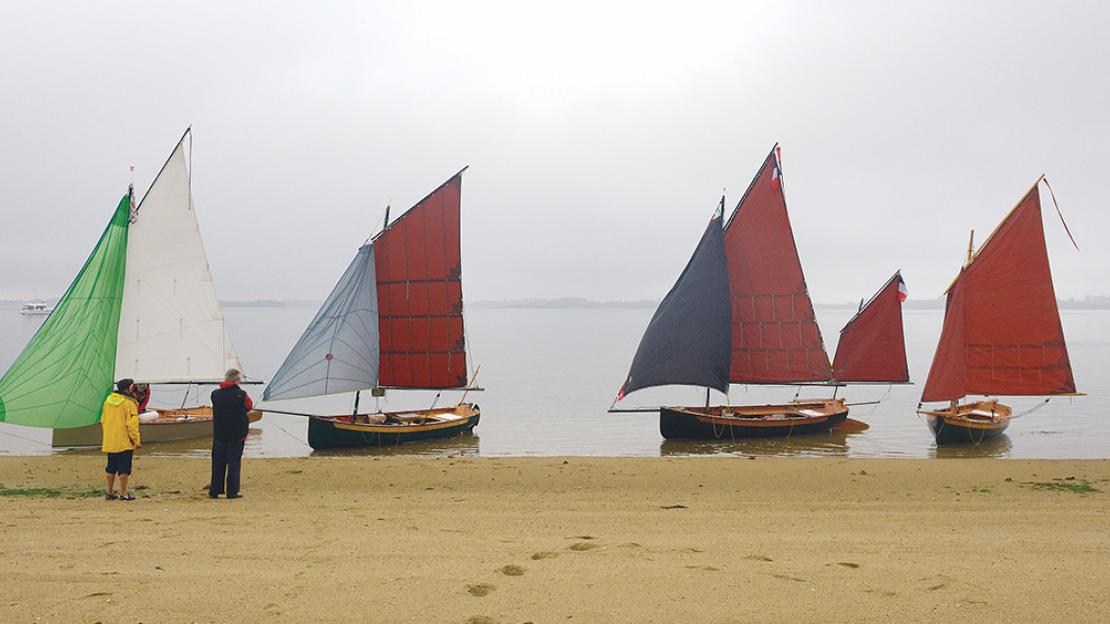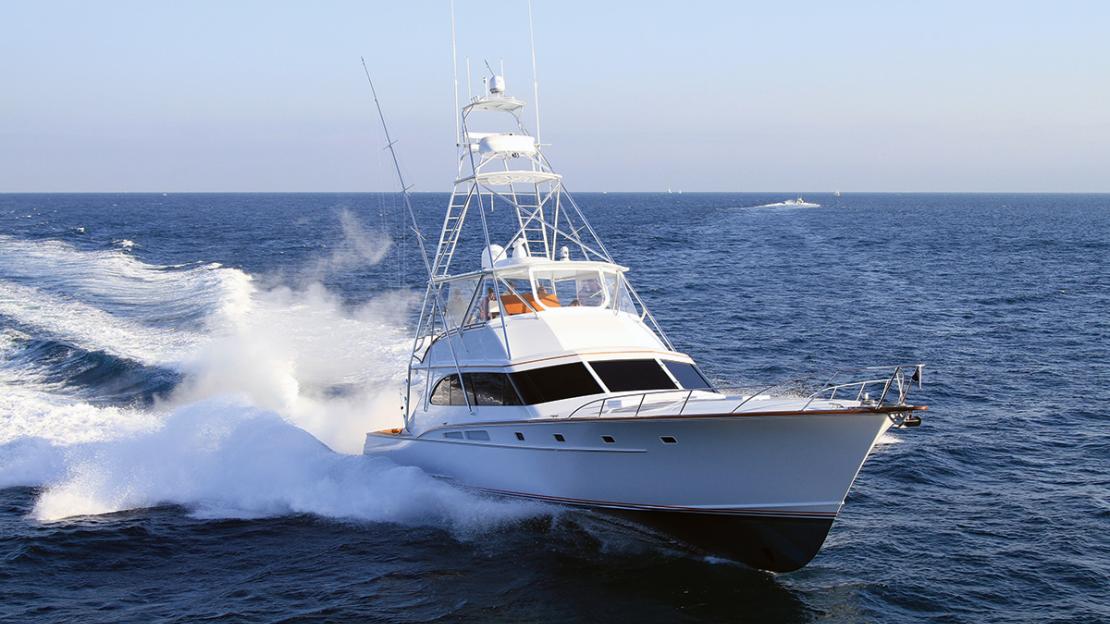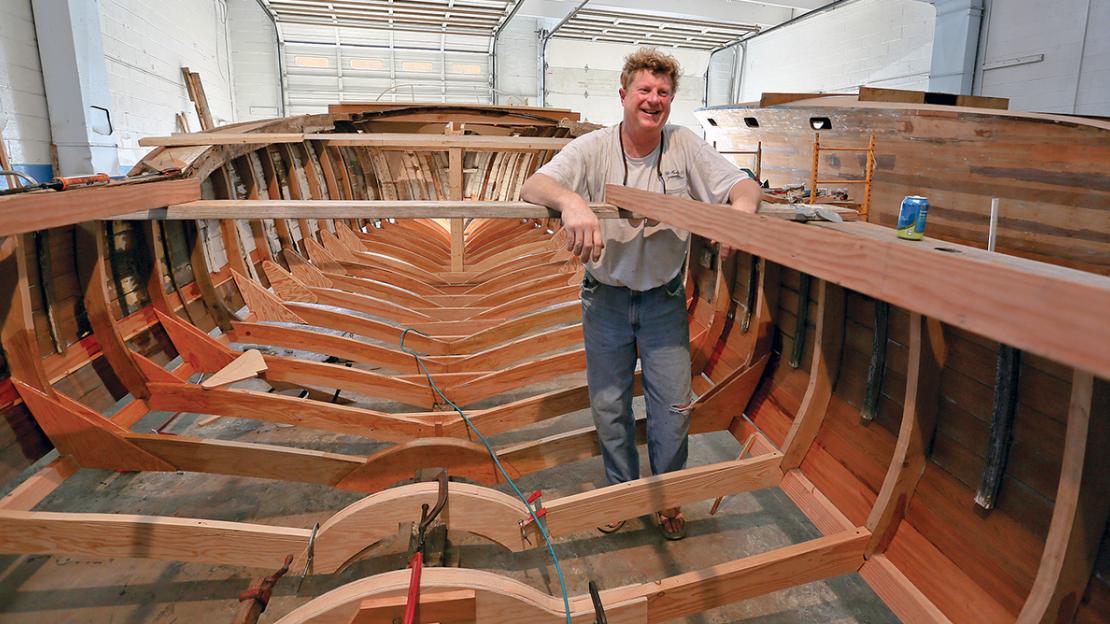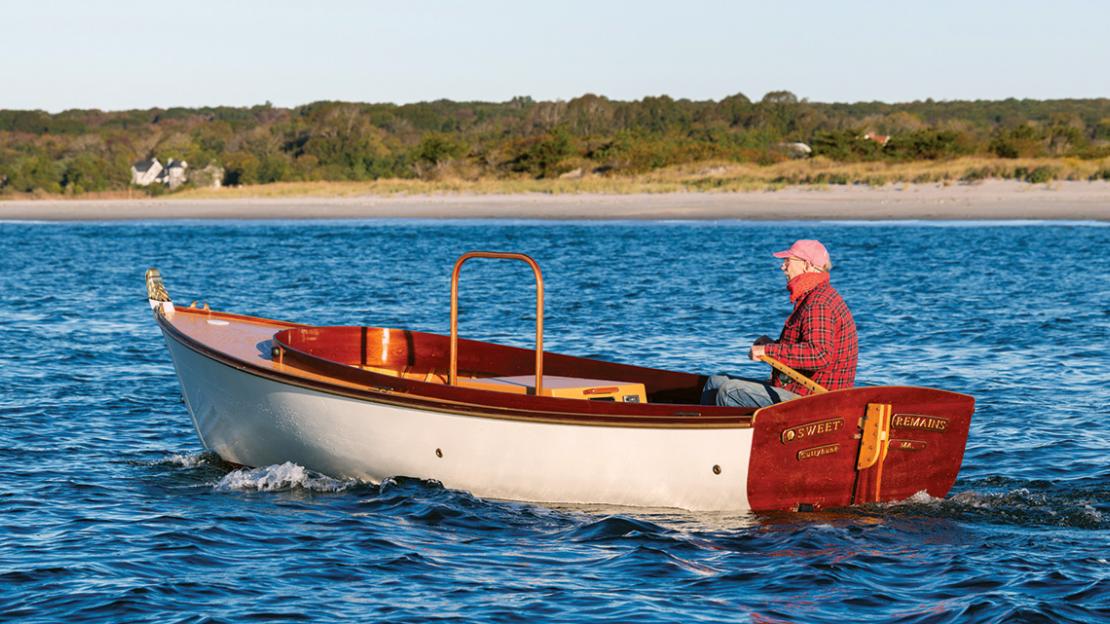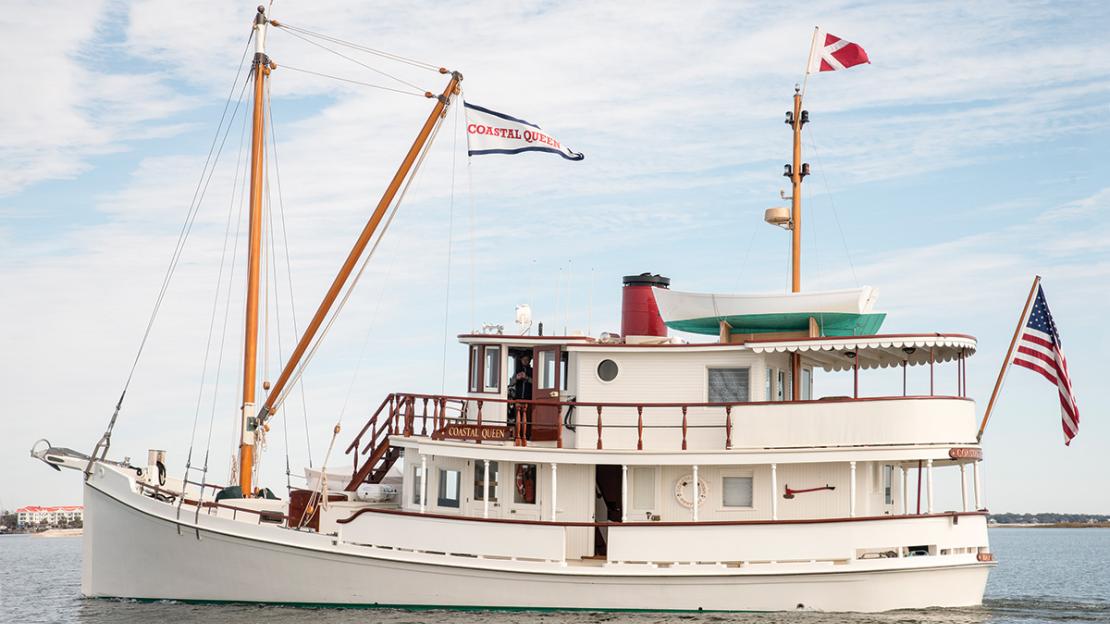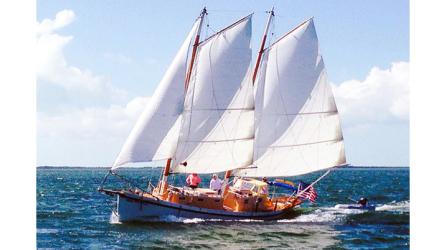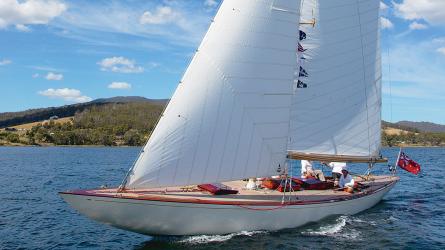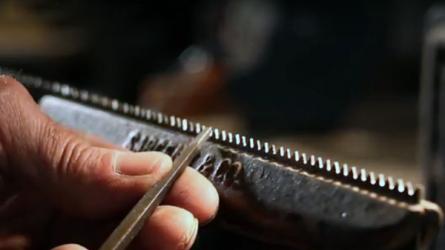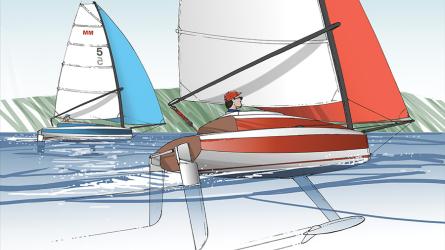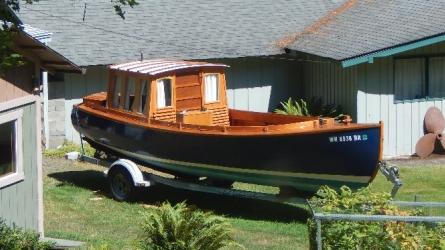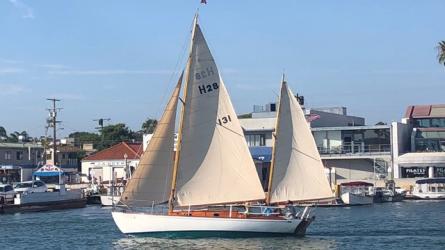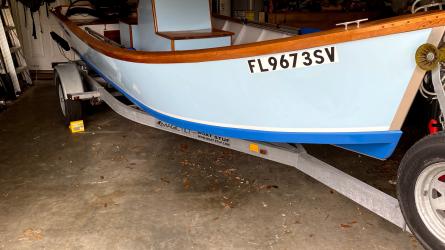That’s Made Out of Wood?
In the mid-1990s, WoodenBoat set up a display at a large sailboat show in Atlantic City, New Jersey. Most of the vendors at that show were manufacturers of boats built of fiberglass. Our display, on the other hand, showcased two small wooden boats: a finished Shellback Dinghy and another one under construction. The completed boat was painted white in a brushed-on gloss topside enamel. The unfinished boat began the weekend as a stack of plywood panels, and by Saturday afternoon it had the shape of a boat—with the usual pre-painting holes in need of filling, glue scars, and plywood appearance. It was shapely, but homely.
The juxtaposition of these two boats was an epiphany for many of the showgoers. Over the course of two days, a steady stream of people filed past our booth, stopped, stared, pointed at each hull, and asked, “That boat is that boat?” Or they pointed at the glossy, finished boat and said, “That’s made out of wood?” This was a lesson for us. Those of us with some familiarity and affinity for wooden boats know that the possibilities are endless for wood construction—that shapes and finishes span the gamut from traditionally planked and caulked hulls to wood-composite racing and fishing machines. Others who are less familiar with wooden boats, however, might have some preconceived notions about wood as a construction material. The fact is that rugged pilot cutters, converted Chesapeake Bay buy boats (page 74), competitive racing sailboats, fast runabouts (page 99), capacious beach cruisers (page 22), and lightweight nimble kayaks can all be built out of wood.
I was reminded of our Atlantic City experience recently when I brought home a proof of this issue’s cover. The hot-pink fishing boat in the image is called TIMID TUNA. She is a Rybovich sportfisherman that was reimagined and rebuilt by Reid Bandy of Annapolis, Maryland. The project included the cold-molding of a tunnel in the boat’s bottom to accommodate a shaft angle lower than the original setup. And the alterations included a redesign of the superstructure, which was rebuilt in high-density foam and E-glass panels. This, along with the shaft-angle reduction and repowering, resulted in a more than 5,000-lb reduction in the hull’s weight—and a speed increase from 25 knots to 35 knots.
Bandy’s motivation for his projects, as quoted by author Joe Evans beginning on page 50, is this: “I’m trying to…prove that these great boats, done right, can be a good value. They are low-maintenance and will perform as well as something brand-new that comes along.” With most of the boats I’ve owned, I’ve been a die-hard purist, striving to maintain originality. There’s something freeing in Bandy’s approach of preserving the best qualities of a worn-out boat and amplifying them with today’s best practices. It’s not the right approach for all projects, but it opens up a world of possibilities with many others.
When I brought home that cover proof, my son Odin asked me incredulously, “That’s made out of wood?” I told him the story of the Atlantic City boat show. His question, for me, confirmed the choice of cover, because the boat in that photograph challenged his notion of a what a wooden boat can be, and it showed him what is possible.

Editor of WoodenBoat Magazine
